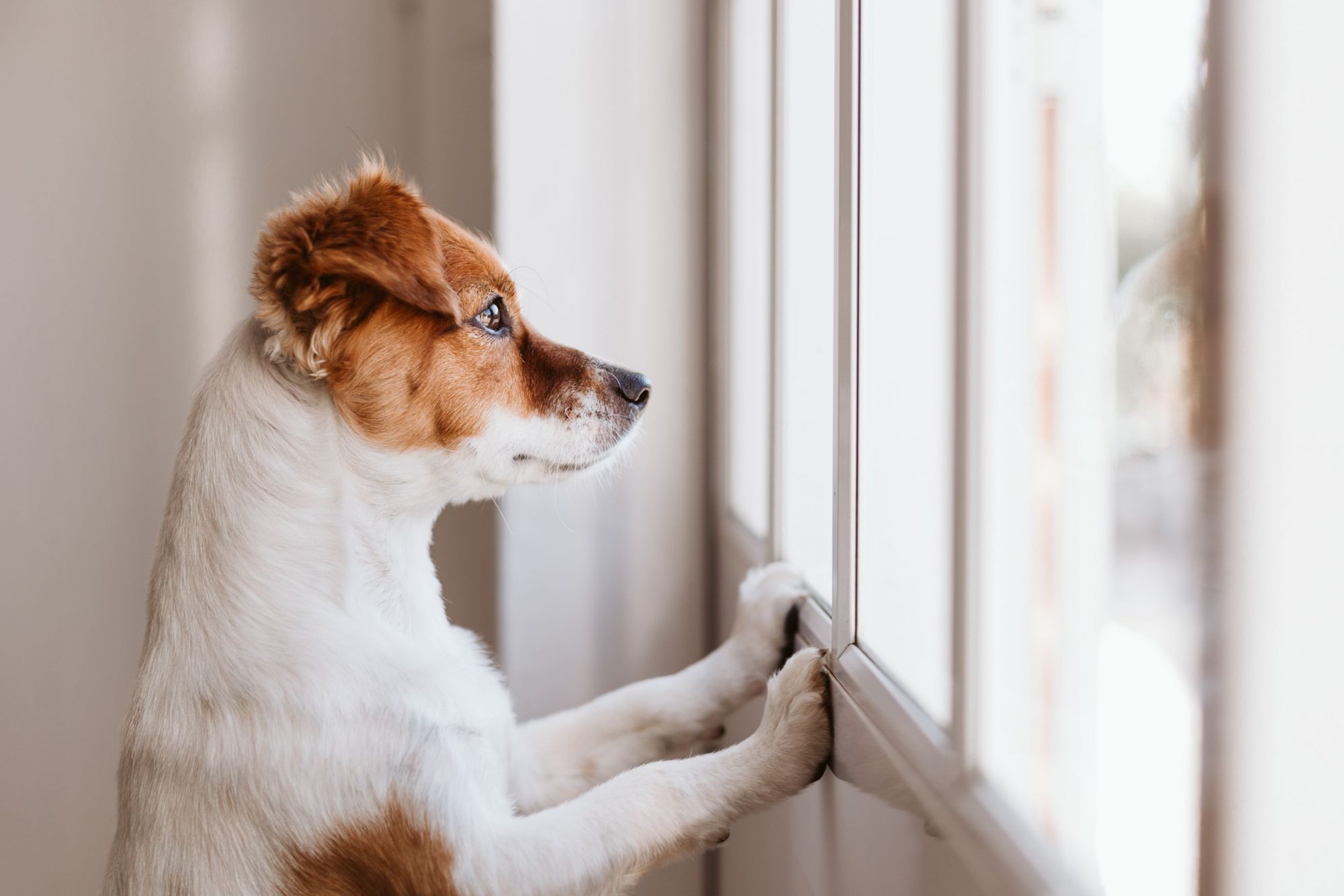Please Don’t Go! Navigating Separation Anxiety in Dogs

The world of COVID has created a unique situation in our pet population. Now more so than ever, our furry family members have grown accustomed to having us at home nearly all the time. As we shift towards trying to live more normal lives again, many of them are protesting loudly. Separation anxiety in dogs can be a really difficult problem to navigate, but The Whole Pet Vet Hospital & Wellness Center is here to help you.
Signs of Separation Anxiety in Dogs
Separation anxiety can look different on different pets. Your dog may be experiencing this issue if they:
- Seem to have less energy than normal
- Hides more
- Has a decreased appetite
- Barks excessively
- Paces or acts otherwise agitated
- Whines more than normal
- Salivates excessively
- Destroys objects or property
- Urinates and/or defecates in the house
- Escapes or attempts to escape from rooms or enclosures such as crates
Most times these symptoms are most prevalent when one or more of your dog’s humans are gone, or when they are anticipating them leaving. Many of these symptoms can also be indicative of other problems, so it is best to contact us first if your pet has one or more of these issues before just assuming it is separation anxiety.
What to Do
If your pet is experiencing separation anxiety and you have ruled out other medical problems, it is time to get to work.
Unfortunately, there is no quick fix for this frustrating and sometimes dangerous problem. Rather your family and our veterinary team will need to work together to teach your pet that the world does not end when you leave the room.
We can work to accomplish this through:
- Confidence building—Your dog will need to learn that they can fare well on their own without you. Distract them for very short windows with a special treat or toy while you leave the room. This may only be for a few seconds or minutes at first. Increase your time away as their confidence grows. Encourage them to explore other areas of your home without your presence by hiding things for them to find. You can also help build your pet’s confidence in the world by providing them with a predictable schedule.
- Create a good relationship with the crate—For most pets, teaching them that their crate is a secure and happy place can be a valuable tool. This can take a lot of patience, especially if your dog has already become scared of the crate.
- Enrichment is important—Increasing your pet’s exercise and mental stimulation can do wonders for most pets. Having a dog walker come into your home mid-day or adding a daily training session can make all the difference in the world. Interactive toys and social dates can be very beneficial as well.
- Training—Professional training as well as changes in your habits at home can be helpful. For instance, keeping your comings and goings calm and low key can help pets feel less stressed. You can also work to desensitize your pet to certain triggers such as you putting on your shoes or picking up your car keys.
- Behavior aids—Pheromone aids such as Adaptil and Feliway can help to ease fears in many pets. Over-the-counter calming supplements can also be helpful in some situations.
- Medications—Sometimes pets are too anxious to learn well and need the aid of medication to help their brains respond to your efforts. Prescription anti-anxiety medications such as clomipramine (Clomicalm) and fluoxetine (Prozac or Reconcile) may be indicated. These types of medications can be effective and are often very helpful.
Most importantly, don’t forget that you are not in it alone. While a lot of the work that needs to be done has to happen in your home, we are here to help you and guide you through that process. Separation anxiety in dogs can be tricky, but most pets respond well with the right plan.
